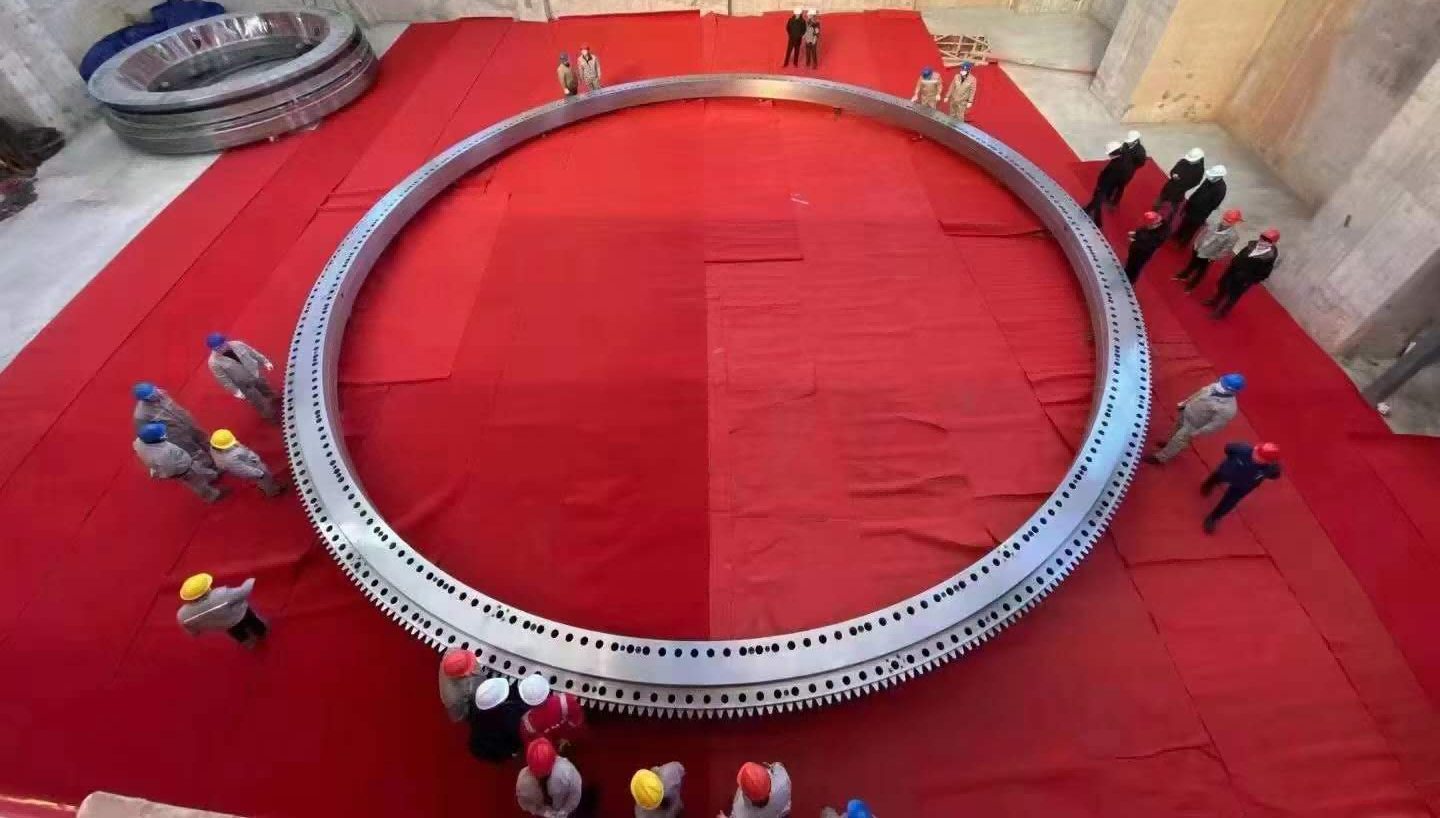Lubrication of Slew Ring

Lubricating a slewing bearing is a critical maintenance task that directly impacts its service life, performance, and reliability. Unlike standard bearings, slewing bearings are large, slow-rotating, and carry complex combinations of radial, axial, and moment loads.
Here is a comprehensive guide to the lubrication of slewing bearings.
Importance of Proper Lubrication
Proper lubrication in a slewing bearing serves several key functions:
· Reduces Friction & Wear: Prevents metal-to-metal contact between the rolling elements (balls or rollers) and the raceways.
· Protects Against Corrosion: Forms a protective barrier against moisture and corrosive elements.
· Dissipates Heat: Helps carry heat away from the contact areas, especially under high load or slow, oscillating motion.
· Prevents Contamination: The grease acts as a physical barrier to keep dirt, dust, and debris out of the critical raceways.
Improper lubrication is a leading cause of premature slewing bearing failure.
2. Choosing the Right Lubricant
You almost always use grease, not oil. The correct grease is selected based on operating conditions.
Primary Types of Grease:
· Lithium Complex Grease: A common, multi-purpose choice for standard applications with moderate loads and temperatures. Good water resistance.
· Polyurea Grease: Excellent for applications requiring long service life, high-temperature stability, and good corrosion protection. Very common in slewing bearings for cranes, excavators, and wind turbines.
· Calcium Sulfonate Complex Grease: Offers exceptional water resistance, corrosion protection, and extreme pressure (EP) properties. Ideal for harsh environments like offshore, marine, or heavy-duty mining equipment.
· Synthetic Greases (PAO, PAG): Used for extreme temperatures (both high and low), where long re-lubrication intervals are desired, or for very high-speed slewing applications.
Key Properties to Look For:
· NLGI Grade: This indicates the grease's consistency. For slewing bearings, NLGI 2 is most common. NLGI 1 or 0 may be used for very low temperatures or centralized lubrication systems.
· Base Oil Viscosity: Must be high enough to form a protective film under the specific load and speed of your application.
· Extreme Pressure (EP) Additives: Crucial for slewing bearings. These additives (like Molybdenum Disulfide - MoS2) prevent welding and pitting under high loads. Look for designations like "EP" or "A/EP" (Automotive/Extreme Pressure).
· Anti-Corrosion & Anti-Wear Additives: Essential for protecting the large bearing surfaces.
Always consult the OEM (Original Equipment Manufacturer) manual for their specific grease recommendation.
3. Lubrication Procedure (Step-by-Step)
Safety First! Lock out and tag out the equipment to prevent any accidental movement.
Step 1: Clean the Area
· Thoroughly clean the area around the grease nipples (zerk fittings) and the bearing's seals. The goal is to prevent introducing dirt during lubrication.
· Wipe off old, leaked grease from the seal lips.
Step 2: Prepare the Grease Gun
· Use a high-quality, well-maintained grease gun.
· Use clean grease from a fresh, sealed container. Load the gun carefully to avoid contamination.
Step 3: Rotate the Bearing
· Slowly rotate the bearing (if possible). This is highly recommended as it helps distribute the new grease evenly along the entire raceway and pushes out old grease.
Step 4: Apply Grease
· Connect the grease gun to the lubrication nipple.
· Pump grease slowly and steadily into the fitting until clean grease begins to purge from the seal on the opposite side.
· Important: The bearing cavity must be completely filled. The purging action is how you expel old, degraded grease and contaminants.
· If the bearing has multiple lubrication points, repeat the process for each one, ensuring grease purges from all seal exits.
Step 5: Clean Up
· After greasing, wipe away all the excess purged grease. A large amount of old grease trapped around the seal can create a "butter ring" effect, causing overheating and seal damage.
· Do not remove the grease that remains inside the seal lips, as it helps protect the seal interface.
Step 6: Record the Maintenance
· Document the date, hours/miles of operation, grease type, and quantity used. This is vital for tracking and establishing a proper maintenance schedule.
4. Lubrication Intervals & Quantities
There is no one-size-fits-all answer. The interval depends on:
· OEM Recommendations: The primary source.
· Operating Conditions:
· Hours of Operation: More frequent use requires more frequent lubrication.
· Environmental Severity: Harsh conditions (dust, dirt, saltwater, high humidity) demand shorter intervals.
· Load & Duty Cycle: Heavy loads and shock loads break down the lubricant faster.
· Temperature: High temperatures can oxidize and degrade grease.
General Guidelines:
· Initial Lubrication: Often done at the factory. Check the manual.
· Running-in Period: For a new bearing, the first re-lubrication might be after just 100-200 hours of operation to remove any initial wear particles.
· Normal Operation: Intervals can range from 500 to 2,000 hours for standard equipment. Critical applications like wind turbines may have very precise schedules based on condition monitoring.
5. Common Mistakes to Avoid
1. Mixing Incompatible Greases: Different thickeners (e.g., Lithium and Polyurea) can react, causing the grease to soften and run out or harden and block channels. Stick to one type.
2. Over-lubrication: While the cavity must be full, forcing excessive grease into a full bearing can damage the seals, cause overheating from churning, and create a mess.
3. Under-lubrication: This is the most common cause of failure. It leads to increased friction, wear, and eventually, spalling (pitting) of the raceways.
4. Using the Wrong Grease: Using a general-purpose grease without EP additives in a high-load slewing bearing will lead to rapid surface fatigue.
5. Ignoring Contamination: Pushing dirt into the bearing with the grease gun is worse than not lubricating at all.
By following these guidelines and prioritizing the manufacturer's specifications, you can maximize the service life and ensure the safe, reliable operation of your slewing bearing.
Pls contact us if you need: info@socaremsi.com
With SoCare®-MSI,you can expect more!

